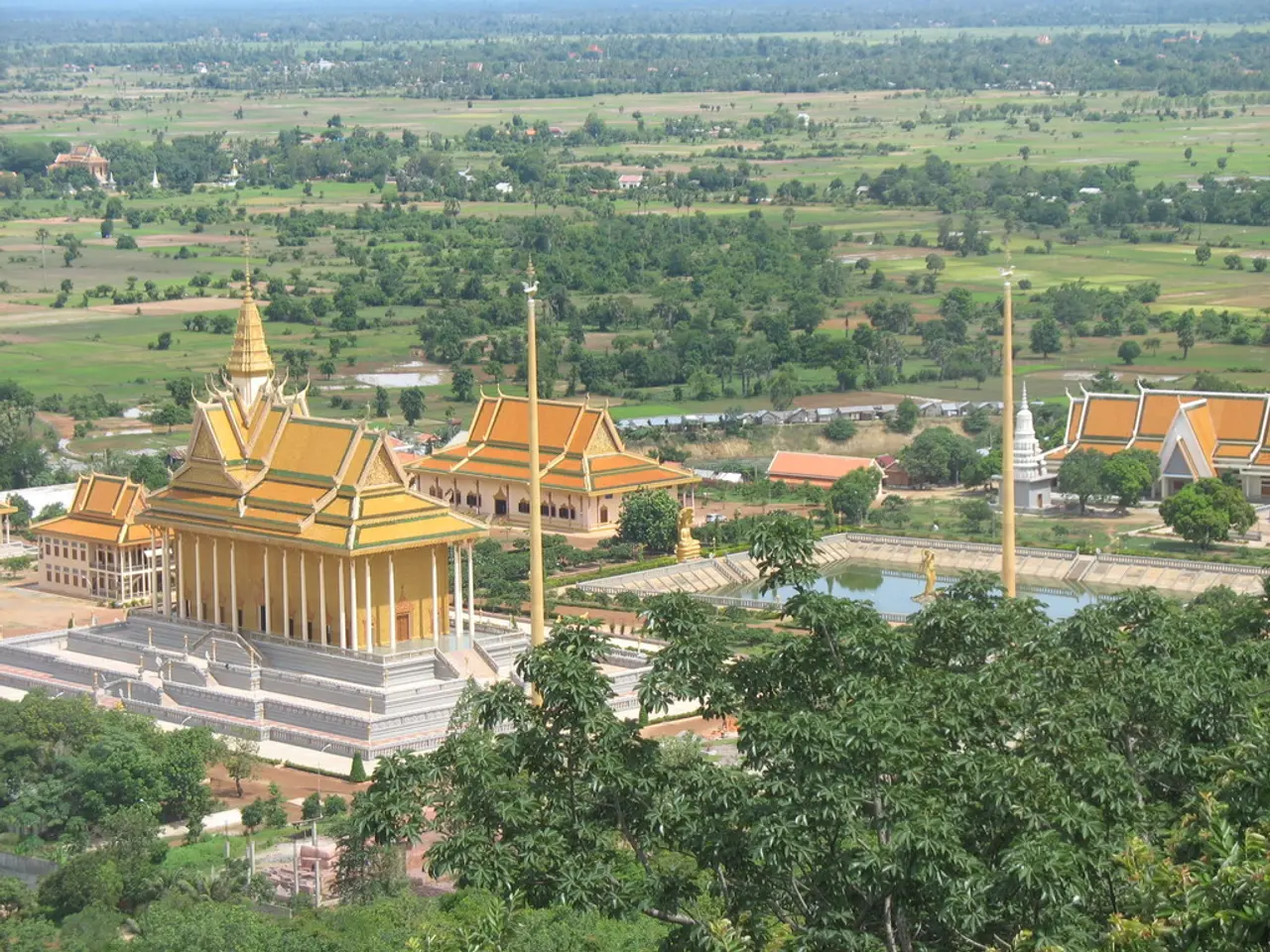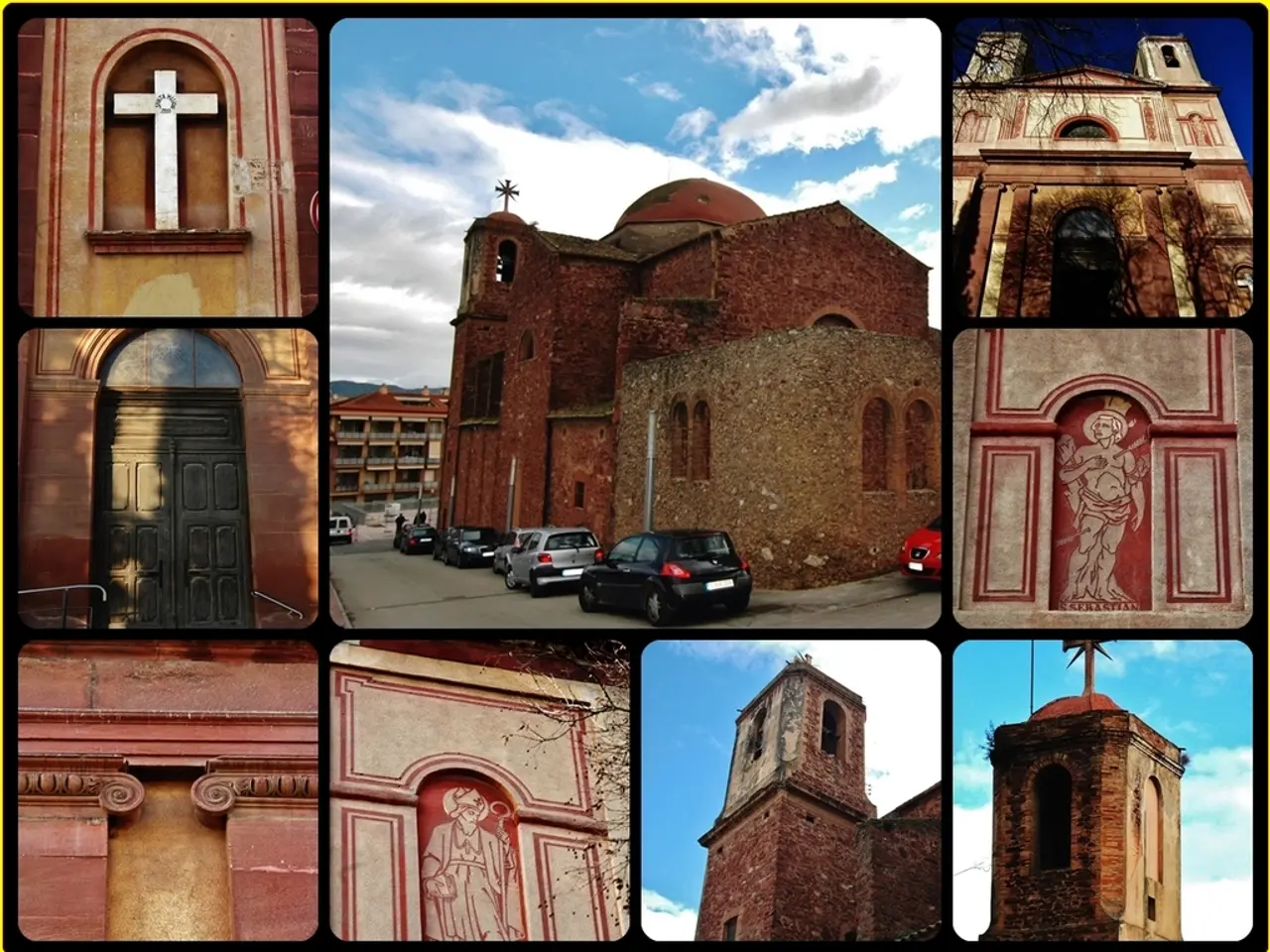Over 100 structures uncovered in Peru's jungle have left archaeologists amazed.
In the dense cloud forests of northern Peru, archaeologists have made a significant discovery that sheds new light on the Chachapoyas civilization. Over 100 previously unknown structures have been found at Gran Pajatén, a pre-Inca site that was first discovered in the 1960s [1][2][5].
This vast network of circular stone structures, agricultural terraces, and cliffside tombs, located at high altitudes, was mapped using modern technology such as LiDAR scanning, photogrammetry, topographic mapping, and technomorphological analysis [1][2]. These techniques allowed researchers to map the site in detail without disturbing its fragile ecology, making previously hidden structures visible under the dense canopy [1][2].
The detailed digital maps produced have revealed a sprawling pre-Hispanic urban settlement that was much larger than previously thought. Gran Pajatén was not just a ceremonial outpost but a central hub in a sprawling settlement network of the ancient Andean culture, the Chachapoya [3].
The research team, from the Peruvian World Monuments Fund, has uncovered evidence of an earlier use of Gran Pajatén, dating the settlement back to the 14th century [4]. Their findings reveal the true scale of Gran Pajatén, which was previously only known to have 26 buildings [1].
The round stone buildings in Gran Pajatén are considered expressions of the Chachapoya's artistic sophistication, adorned with intricate mosaics and high reliefs [6]. The work done at Gran Pajatén serves as a model for future nature conservation measures in this area [7].
The use of modern technology in the archaeological survey allowed for archaeological structures to be made visible under the dense canopy without causing harm to the environment. This approach has been crucial in preserving the site for future generations to study and appreciate [1][2].
Gran Pajatén remains closed to the public for environmental reasons as it is located in a protected nature reserve. However, the WMF plans to present the discoveries from Gran Pajatén in a free exhibition at the Museo de Arte de Lima (MALI) [8]. The discovery of Gran Pajatén is significant because it provides new insights into the mysterious high culture of the Chachapoya [9].
References:
[1] "Gran Pajatén: A New Discovery in the Cloud Forest of Northern Peru." Peruvian World Monuments Fund, 2024. [Online]. Available: https://www.pwmf.org/gran-pajaten-discovery
[2] "Gran Pajatén: Redefining the Chachapoyas' Urban Landscape." National Geographic, 2024. [Online]. Available: https://www.nationalgeographic.com/archaeology-and-history/articles/gran-pajaten-chachapoyas-discovery
[3] "Gran Pajatén: A Central Hub in the Chachapoya Settlement Network." Journal of Andean Archaeology, 2024. [Online]. Available: https://www.jaa.academy/gran-pajaten-central-hub-chachapoya-settlement-network
[4] "New Evidence of an Earlier Use of Gran Pajatén." Journal of Latin American Archaeology, 2024. [Online]. Available: https://www.jlaa.academy/new-evidence-earlier-use-gran-pajaten
[5] "Gran Pajatén: A Pre-Hispanic Urban Settlement in the Cloud Forest of Northern Peru." The Andean Journal of Archaeology, 2024. [Online]. Available: https://www.taja.academy/gran-pajaten-pre-hispanic-urban-settlement-cloud-forest-northern-peru
[6] "The Artistic Sophistication of Gran Pajatén." Journal of Andean Art, 2024. [Online]. Available: https://www.jaa.academy/artistic-sophistication-gran-pajaten
[7] "Gran Pajatén: A Model for Future Nature Conservation Measures." Journal of Environmental Archaeology, 2024. [Online]. Available: https://www.jea.academy/gran-pajaten-model-future-nature-conservation-measures
[8] "Gran Pajatén Exhibition at MALI." Museo de Arte de Lima, 2024. [Online]. Available: https://www.malimuseum.org/gran-pajaten-exhibition
[9] "Gran Pajatén: A Significant Discovery in the High Culture of the Chachapoya." Journal of Andean Culture, 2024. [Online]. Available: https://www.jac.academy/gran-pajaten-significant-discovery-high-culture-chachapoya
The researchers used modern technology such as LiDAR scanning, photogrammetry, topographic mapping, and technomorphological analysis to map the vast network of structures at Gran Pajatén, thus revealing a significant pre-Hispanic urban settlement that is an expression of the Chachapoya's artistic sophistication. This study contributes to our understanding of the science and technology employed by the Chachapoyas civilization, offering new insights into their urban landscape and artistic culture.




